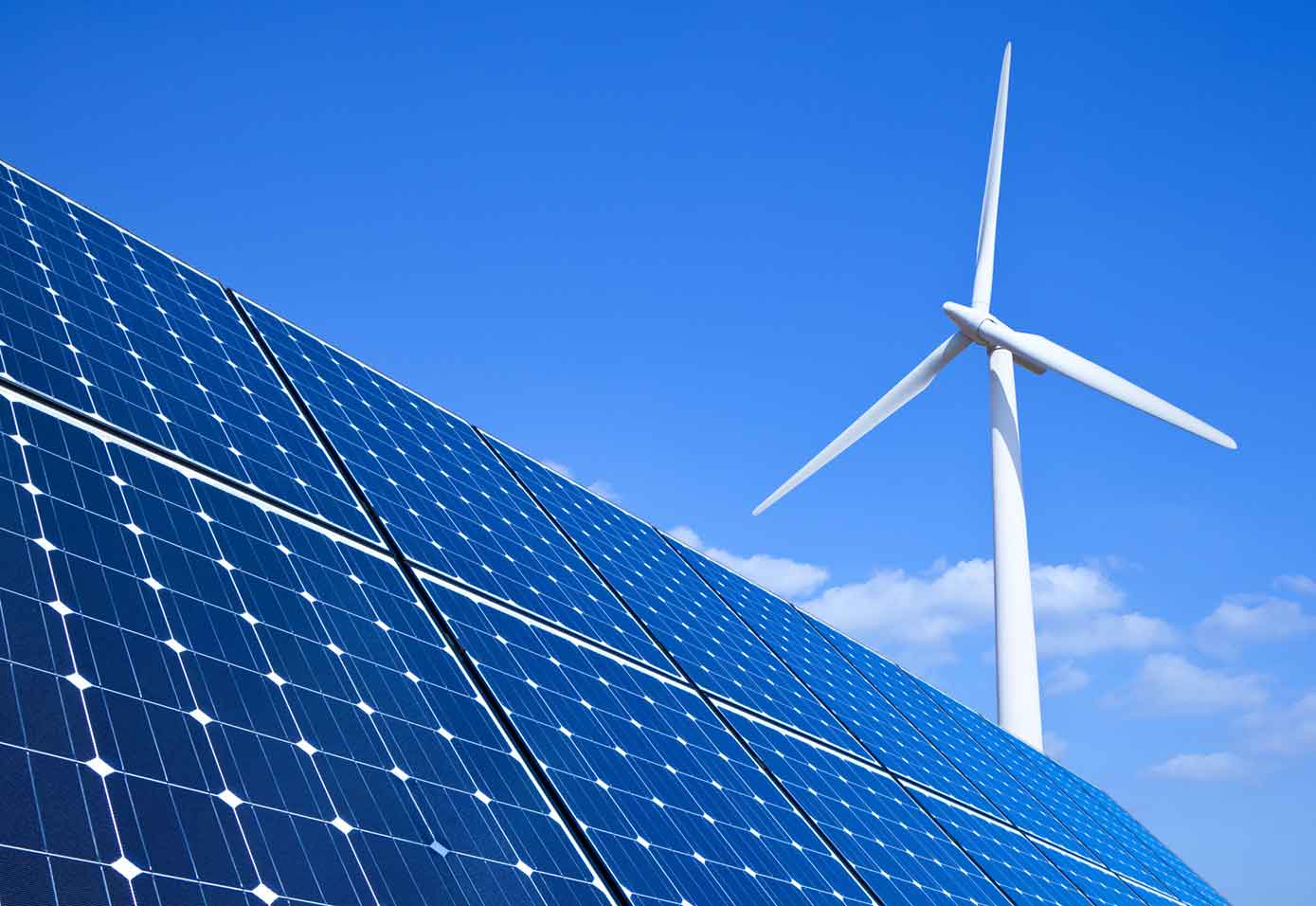Are you crunching the numbers to figure out if solar panels are worth it for your house? A lot of us are at it nowadays, and solar panel technology is a handy tool to have.
We all know that every little bit helps when it comes to saving on energy costs. There are so many little things that you can do to lower your energy footprint, like lower the temperature on your thermostat, use a power strip, and even clean out the dust in the AC filter.
There are also a number of bigger moves you can make, like purchasing a more energy-efficient appliance. However, one of the more substantial upgrades is installing solar panels.

If you’re thinking about making the switch to the best solar panels, you might wonder, “How does solar panel technology work?” We’re happy to break it down for you. Keep reading to learn more.
Solar Panel Science: Sunshine Into Electricity
Solar panel technology uses solar cells to convert the sun’s energy into electricity. Solar cells are made up of semi-conductive materials such as boron, phosphorus, and doped silicon sand and act as photovoltaic cells. A photovoltaic cell works by allowing photons from sunlight to enter the semi-conductive material.
This is to promote electrons from the material’s valance band to its conducting band. This causes the electrons to flow freely and generate electricity. The electricity generated is then sent to a power inverter for conversion from direct current (DC) to alternating current (AC).
AC electricity is the regular source of electricity used in most homes. The electricity generated can be used to power devices or stored in a battery. Solar panel technology can be implemented in homes, industrial sites, and businesses. It is a viable way to reduce energy bills and provide a clean energy source for the user.
Also Read: Siding Color and Texture: How to Choose the Perfect Look for Your Home
Benefits of Going Solar
Home solar panels are an eco-friendly and cost-saving option for generating energy. Solar energy is often considered a form of clean energy due to its lack of air pollution. It also offers tremendous economic benefits, as the cost of solar energy is steadily decreasing.
This makes it a more affordable option when compared to other forms of energy production. Solar energy can also be stored for use in the evenings and at night. Solar panels can also help reduce a community’s reliance on fossil fuel-generated electricity.
It also helps to lower the associated environmental pollution. Solar panels offer a great way to reduce air pollution and keep our environment clean and healthy. Solar panels reduce our need for traditional electricity. This is usually produced from coal, oil, or natural gas.
Using solar panels to generate power will help lower the production of these non-renewable sources of energy that contribute to air pollution. In addition to reducing air pollution, solar panels are also more economical than traditional sources of electricity. Solar power is also renewable, meaning it won’t run out.
It helps reduce greenhouse gas emissions, all of which contribute to our overall health and the climate. Solar energy is clean, renewable, and affordable, and it reduces our dependence on oil and gas. This is why so many people choose to use solar panels to reduce their environmental impact.
Installation of Solar Panels
Solar panels can be a great way to reduce energy costs and the carbon footprint of a household. Generally, the installation by a top solar company can be a simple and straightforward process. First, any existing appliances must be unplugged in order to begin.
An engineer should be consulted to design a system that works best for the area and environment. Once the design is confirmed, it’s time to start work on the installation. Posts are installed to hold the panels, and the panels themselves are attached to the posts.
Electrical wiring is then connected to the panels, and any meters or monitoring equipment is set up as well. After installation is complete, the system is tested for safety, energy efficiency, and performance output. The installation of a solar panel by a professional installer requires knowledge and skill.
Understanding the Role of Silicon
Silicon is the primary material used to make modern solar panels. It has the unique property of being able to absorb a large portion of the sun’s visible light and convert it into usable energy. The silicon atoms used in a solar cell to produce power have been especially “doped” with elements like boron or phosphorous.
This is to give them different polarities. This creates positive and negative electrical charges. The process of absorbing energy from the sun and creating electricity is known as the ‘photovoltaic effect’.
Silicon is the ideal material for this because it is relatively cheap and abundant. Its atom structure allows for the creation of these electrical charges. Silicon is vital to solar power technology, proving to be one of the most important components of a solar panel.
Solutions for Reducing Energy Loss in Solar Panels
Energy loss in home solar panels can occur due to numerous factors, including the materials used, the installation process, and the angle the panel is installed. Dust, dirt, and shade can also drastically reduce the efficiency of the panel. Poorly wired connections within the panel can lead to heat buildup.
This can also cause energy to be lost. Finally, a mismatch between the type of panel and inverter can reduce overall efficiency. Although there is some energy loss in solar panels, they have been a popular means of producing renewable energy due to their affordability and low environmental impact.
Calculating the Pros and Cons of Solar Energy Costs
Solar energy has gained popularity in recent years as people look for ways to reduce their carbon footprint and energy bills. However, when deciding whether or not to make the switch to solar energy, there are a few factors that need to be taken into consideration.
First, the cost of installation can be quite high. However, government incentives and tax credits can help offset this cost. Second, while maintenance costs are relatively low, they must still be taken into account.
Third, the location of the installation and average daily sun exposure is also important. This is when it is determined how much energy will be produced by the system.
Finally, the cost of the panels themselves must be weighed against the potential financial savings. All of these factors must be calculated in order to determine the overall pros and cons of solar energy costs.
Different Types of Solar Panels
Solar panels are an important component of energy conservation. They are available in a variety of shapes, sizes, and materials, allowing for use in a variety of applications. Here are the main solar panel options:
Monocrystalline
Solar panels that use monocrystalline PV cells are some of the most efficient solar panels available. Monocrystalline solar panels are made using single-crystal silicon. It allows them to absorb more sunlight and convert it more efficiently into usable energy than traditional solar panels.
They are more efficient because the silicon cells are larger and are thus able to absorb more of the sunlight available. Monocrystalline solar panels are smaller and therefore take up less space than traditional solar panels. They are attractive, as they have a uniform black color with a glossy finish.
Polycrystalline
This type of solar panel is made from numerous smaller, crystalized silicon cells that are interconnected. The silicon used to create this type of solar panel is made from melted silicon of much lower purity than monocrystalline cells. This allows for more efficient and less expensive production.
Being very efficient, polycrystalline solar panels are much more effective than traditional solar panels. They require much less effort to set up or maintain, but the downside is that they don’t collect as much sunlight as monocrystalline panels. Moreover, they are more sensitive to temperature changes.
This means they need to be placed somewhere that receives more direct sunlight. Regardless, they are still great at collecting energy and have a longer lifespan than traditional solar panels. They also require much less maintenance and are usually more durable.
Thin Film
Thin-film solar panels are a type of photovoltaic (PV) panel made with a special type of material that is only a few microns thick. It is an emerging technology that uses amorphous silicon, or a-Si, known as ‘thin film technology’. It is designed to convert sunlight directly into electricity.
Thin films are much thinner and less expensive to produce than traditional ones. This makes it an ideal choice for small-scale solar projects, like powering remote homes and small rural communities. Thin-film solar panels require less maintenance since they are not as susceptible to dirt, dust, and other external factors.
They are also typically more resilient to extreme temperatures and have lower start-up times. The main disadvantage of thin-film solar panels is that they typically have lower efficiency, which can be a problem in areas with less consistent and reliable sources of sunlight.
Also Read: What You Should Know About Water Damage?
Consider Solar Panel Technology Today
Solar panel technology is an incredibly useful tool for harnessing renewable energy from the sun. It is a reliable way to generate electricity for homes and businesses.
With this knowledge, it’s easy to see the importance of understanding how solar panel technology works. If you are interested in learning more, consider solar panel technology to get the most out of it.
If you find this article helpful, check out more of our blogs!











+ There are no comments
Add yours